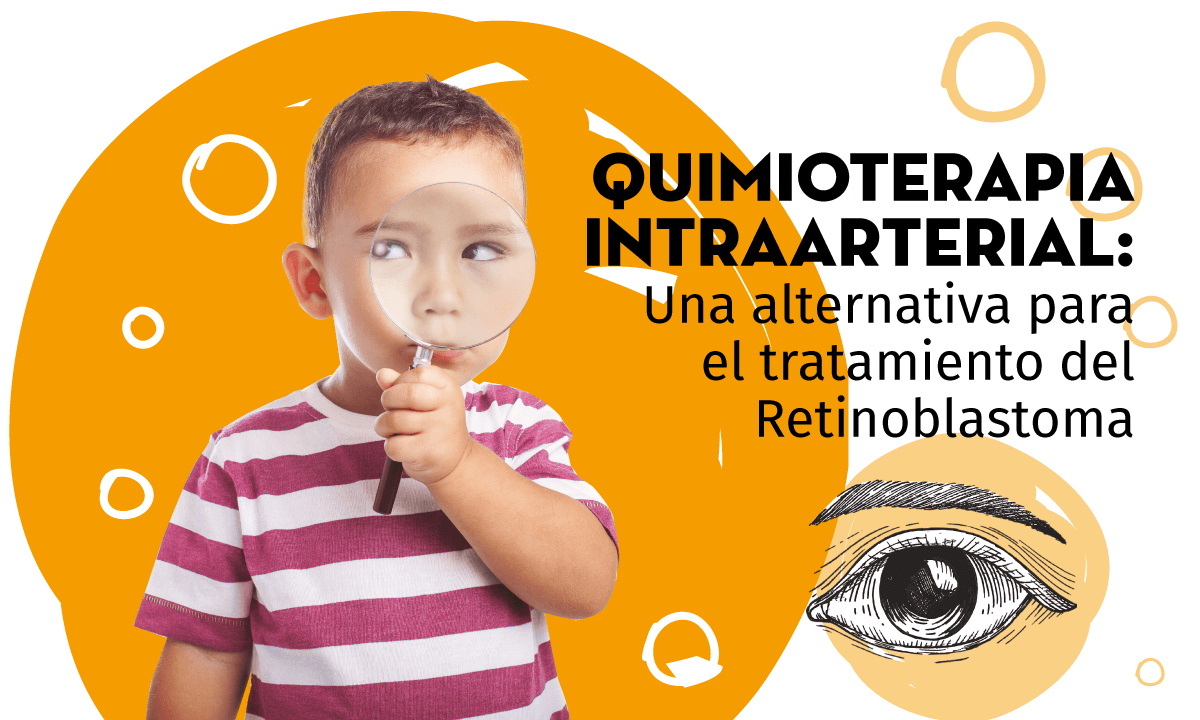Medical Directory
More than 500 full time specialists, who guarantee you appropriate care
View DirectoryO
P
U
P
U
International Medical Care
Click on the overview to see more information about our office
More than 500 full time specialists, who guarantee you appropriate care
View DirectoryClick on the overview to see more information about our office

Retinoblastoma is a malignant tumor in the eye that affects the retina (the innermost layer of the eye). 95% of cases are children younger than 5 years old, and accounts for a 3% of malignant tumors in children; it may cause vision loss and be life-threatening. At advanced stages, it may disseminate (spread) and affect other organs, mainly, the brain.
Among tumor manifestations, leukocoria is the most frequent sign, which usually occurs as a white reflex that can be seen inside the eye, through the pupil. strabismus (eye deviation), vision loss, persistent eye redness, glaucoma (elevated intraocular pressure) that, in children, may cause pain, blurred vision and an increase in the eye’s size.
Alarm symptoms:
A white reflex in the pupil, when a photograph is taken under a flash.
If this pathology is detected at an early phase, there is a high probability of complete recovery with conservation of the affected eye’s vision. Chances of complete recovery reduce as the tumor progresses, resulting in eye loss, in some advanced stages.
Fundación Valle del Lili has a wide experience in retinoblastoma treatment. It has a multidisciplinary team of specialists in Hemato-Oncology, Pediatric Ophthalmology, Neurointervention, Genetics, Pathology, Psycho-Oncology, etc., which are ancillary to each other and provide the best care for children affected by this disease.
Since 2011, Fundación Valle del Lili has a state-of-the-art procedure, called intra-arterial chemotherapy, which at the time was used by at least a dozen of important hospitals around the world. Currently, this the main line of treatment for the tumor and is performed in specialized institutions.
This procedure is performed at the Vascular Neurointervention Service, which has specialized in endovascular treatments, using catheters in order to have access to the target organ, without the need of an open surgery.
Patients who receive this treatment have been selected though a clinical process by the treating medical group after a complete evaluation.
Intraarterial chemotherapy is performed under general anesthesia in the angiography room, which is equipped with cutting-edge technology for evaluation and navigation through the arteries, using X-rays. Radiation dosing is adjusted to pediatric doses, taking all radioprotection measures.
The main objective of this therapy is administrating chemotherapy drug products directly in the affected eye’s circulation, avoiding the possible effects of drug products on healthy organs.
Once the patient is in the angiography operation room, a small puncture is performed in the femoral artery, above the groin, in order to have access to the body’s arteries and navigate to the head, and thus, catheterize the artery in the diseased eye (ophthalmic artery).
Once the catheter is placed in the target site, the specific drug product formulated for each individual case is injected in a controlled way.
The procedure takes approximately 2 hours. Once it is finished, the patient will remain in hospitalization for at least 24 hours, in order to monitor the puncture site and the general clinical condition.
The treating medical group will always be available in order to solve concerns and provide support to the family throughout the whole process, always searching for the best outcome for patients.
It is worth to note that the treatment success will depend on timely diagnosis and treatment. Please, ask your doctor (pediatrician or ophthalmologist) if you suspect you or your child may have this disease.